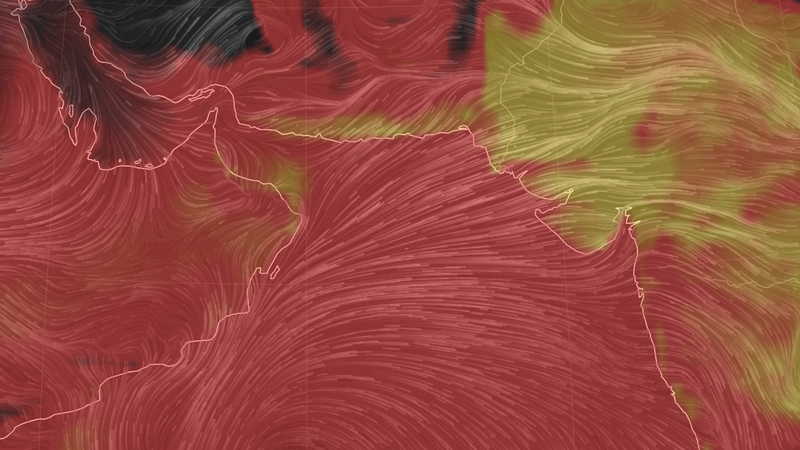Pakistan May Have Just Set a World Heat Record
1 May, 2018
High temperatures are
forecast to reach the mid-80s this week in New York, and I’m
dreading it. But I have a plan to stay cool: just thinking of how
much hotter it is in Pakistan, which is in the middle of a blistering
heat wave.
Temperatures reported
to have cracked
50.2 degrees Celsius (122.3 degrees Fahrenheit) on Monday in
Nawabshah, located about 127 miles northeast of Karachi. If
confirmed, that could make the measurement not just the hottest ever
recorded for April in Pakistan, but the hottest ever reliably
recorded for April anywhere on Earth.
There
was also a major heat wave last April in Pakistan that saw
temperatures get nearly as extreme. Nearby Larkana topped
out at 50 degrees Celsius (122
degrees Fahrenheit), which is the old accepted April record for
Pakistan. (There’s another single report of 51
degrees Celsius,
but it’s hard to say how accurate that is.)
Either
way, it’s hot AF right in Nawabshah right now. According to Dawn,
a regional news outlet, the heat caused
people to pass out and
forced “business activities came to a halt” in the district of
1.1 million. The same city hit 45.5 degrees Celsius (113.9 degrees
Fahrenheit) in March, setting an all-time March record for
Pakistan according
to Capital
Weather Gang.
But Nawabshah is hardly
the only sweltering locale. A vast area from Eastern Europe to South
Asia is under a massive heat dome that’s been building since last
week. Heat domes occur when an area of high pressure camps over a
region, causing dry air to sink. As it sinks, that air gets
compressed and releases heat, leading to sizzling temperatures. Burt
also noted that Poltavka, Russia, located on the Kazakhstan border,
recorded the warmest April temperature for the Asian portion of
Russia when it topped out at 34.8 degrees Celsius (94.6 degrees
Celsius) on April 29.
The heat dome may also
have helped trigger wild weather in the Middle East last week,
locking in low pressure that unleashed towering haboobs, huge hail,
and deadly flash flooding in the region.
While the Middle East’s
weather has since dissipated, the heat dome is expected to persist
for much of the week. Bob Henson, a meteorologist and writer at
Weather Underground, told Earther that means more record highs are
likely, albeit there probably won’t be any more all-time world
record contenders. Those don’t happen every day.
Extreme heat in Pakistan continues Tuesday ... large area of 110°F+ up to 117°F shown in ECMWF forecasts
Both °C and °F shown to compare.
(Maps: weathermodels.com)
On Tuesday, temperatures
were forecast to be well over 43 degrees Celsius (110 degrees
Fahrenheit) across large portions of Pakistan. Overnight lows will
likely stay above 38 degrees Celsius (100 degrees Fahrenheit) for a
number of low-lying areas in Pakistan, adding to the misery and
upping the risk of heat-related health impacts.
The
recent eye-popping temperatures in Pakistan fall in line with a
growing body of research showing how climate change is making heat
waves more common and intense nearly everywhere. This is particularly
dire news for what’s already one of the hottest parts of the world.
Research published
last year,
for instance, shows that climate change is adding to the death toll
in India by making heat waves worse and “will lead to substantial
increases in heat-related mortality” in the coming century.






 Exceptionnel 50.2°C à Nawabshah au
Exceptionnel 50.2°C à Nawabshah au 

No comments:
Post a Comment
Note: only a member of this blog may post a comment.